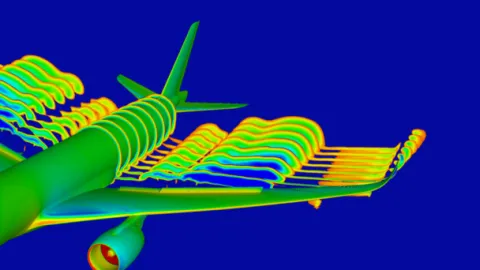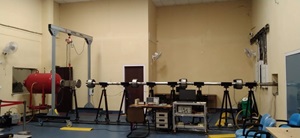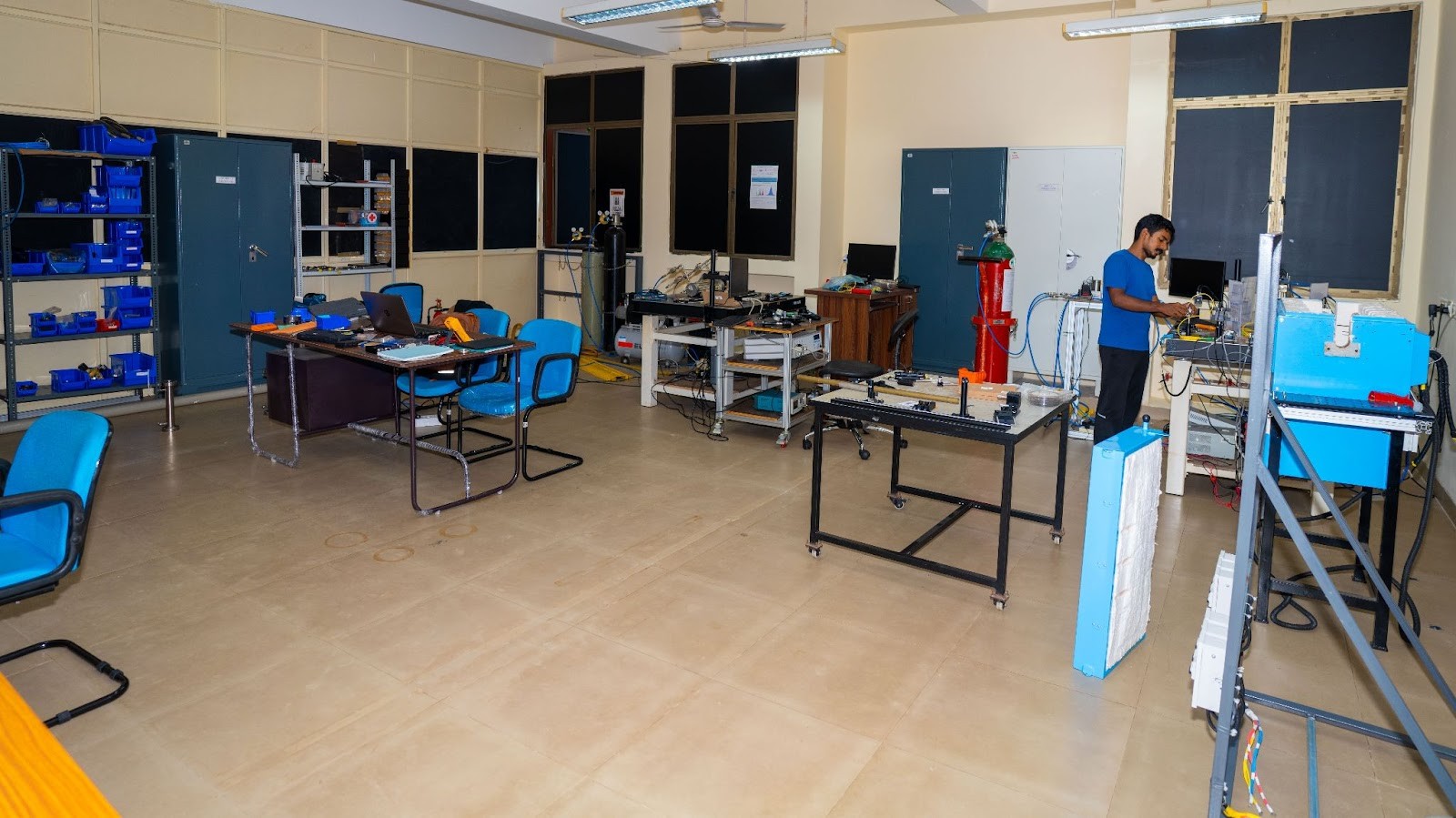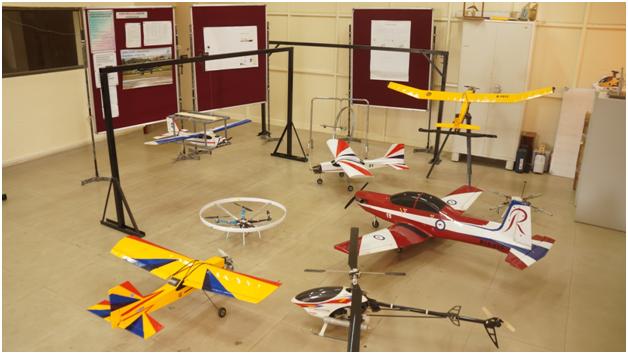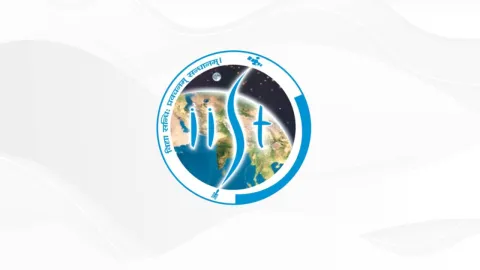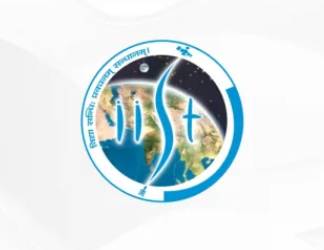In addition to ISRO funded projects, the faculty members of IIST are engaged in externally funded projects from national agencies/society/departments such as DST-SERB, ICSSR, MoES, DBT, Ministry of Electronics and Information Technology -MeitY, DRDO, KSCSTE etc, in the niche areas of space science technology and applications as listed below.
The group is actively involved in computational and experimental research on fluid flows, ranging from low Reynolds number jets to high enthalpy hypersonic flows. In addition to exploring fundamental research areas such as flow instability, we are also pursuing applied research such as aerodynamic shape optimisation, AI/ML applications to aerospace engineering and development of laser based sensors for high temperature flow diagnostics. Flight mechanics is also an active area of research in this group with work being carried out in areas such as system identification of flight vehicles, reinforcement learning based control and trajectory optimisation. AFM labs are equipped state of the art facilities such as high pressure shock tube, UAV systems, tunable diode lasers.
Applied and Adaptive Optics research group in the department of physics carried out research in optics that facilitate design, development and innovation of optics instrumentation and technology. Optical metrology using interferometry, holography, spectroscopy and polarimetry using a variety of light sources such as femto–second lasers, tunable and fixed wavelength lasers, as well as with low coherent light sources and additional controls using state of the art devices such as spatial light modulators, digital micro-mirror devices(DMD) has elevated the research leading to cutting edge technologies of the future. Optical aberration sensing using the state of the art devices like Shack-Hartmann wavefront sensors, and their corrections using deformable mirrors find immense application in optical imaging and communication through atmospheric turbulence and scattering media. Supporting theoretical research and modelling using pseudorandom phase plates allows deeper investigation into the field.
Faculty: Dr. Biswajith Pathak (Ramanujan Fellow).
Studying Optical Engineering at IIST
Currently, IIST takes students through advanced JEE for a five-year dual degree (BTech in Engineering Physics and Master of Technology in Optical Engineering) program, of which the fourth and fifth years are dedicated to Optical Engineering. In addition, one can join a two-year stand alone Master of Technology in Optical Engineering through GATE score.
Carrying out research in Fundamental, Applied and Adaptive Optics at IIST
Students can enroll for the doctoral program in Optics in the Department of Physics twice a year (in January and August).
IIST has an official summer internship program during June and July. The announcement of internship opportunities is made available on the IIST website typically in the month of April.
Anyone interested in a postdoctoral or research internship position is encouraged to contact individual faculty members.
From the birth of stars to the mysteries of black holes and the structure of the cosmos, Astronomy & Astrophysics research at IIST explores a wide spectrum of cosmic phenomena. Our team of six faculty members brings together extensive multiwavelength observational expertise and theoretical insight.
Key research themes
Formation of massive stars in our Galaxy
Investigation of the interstellar medium
Accretion around compact objects
Gamma-ray bursts and gravitational wave astronomy
Intergalactic medium and galaxy halos
Machine learning techniques to study astrophysical sources
Broader vision and collaboration
We are actively engaged in national and international collaborations and big projects.
IIST faculty members are actively engaged in the Indian multiwavelength ASTROSAT mission.
India is a member country of the upcoming Square Kilometre Array (SKA) observatory, the world’s largest radio telescope. IIST is a part of the SKA-India consortium, which oversees the educational and research activities related to SKA science in India.
IIST is a member institute in the Belgo-Indian Network for Astronomy and Astrophysics (BINA)
Astronomy lab
At the IIST campus, there is an astronomical observatory with a 14-inch and an 8-inch telescope with imaging and spectroscopic capabilities. The facility is used for undergraduate and postgraduate labs where students get hands-on experience in carrying out interesting night sky observations. In addition, an 8-inch telescope is dedicated exclusively to outreach activities. The observatory facility is in the process of being upgraded with a new telescope.
Apart from this, there is an Astronomy Lab for instrument characterisation. This lab is also equipped with desktops and workstations for data reduction and analysis.
Studying astrophysics at IIST
Currently, IIST takes students through advanced JEE for a five-year dual degree (BTech in Engineering Physics and Master of Science in Astronomy & Astrophysics) program, of which the fourth and fifth years are dedicated to doing astronomy. In addition, a two-year Master of Science in Astronomy & Astrophysics for engineering graduates and MSc holders is offered every year. The students undertake one year of coursework followed by a year dedicated to a master’s thesis.
Doing astrophysics at IIST
Students can enroll for the doctoral program in astrophysics in the Department of Earth and Space Sciences twice a year (in January and August).
IIST has an official summer internship program during June and July. The announcement of internship opportunities is made available on the IIST website typically in the month of April.
Anyone interested in a postdoctoral or research internship position is encouraged to contact individual faculty members.
The Atmospheric Science group comprises three faculty members engaged in both numerical modeling and observational studies of the atmosphere. Their primary focus lies in enhancing mesoscale model performance through the assimilation of non-conventional data sources, including satellite observations, using advanced data assimilation techniques.
Group members also have expertise in deploying and analyzing data from atmospheric boundary layer towers to address key scientific questions. One faculty member specializes in aerosol measurements and investigates their impact on cloud microphysics and the radiation budget, particularly in the context of climate change.
The group’s research spans several thrust areas: monsoon climate studies, climate and mesoscale modeling, data assimilation, aerosols and their role in climate change, radiation–climate interactions, atmospheric boundary layer processes, the use of unmanned aerial vehicles (UAVs) as research platforms, and the development of miniaturized instrumentation for space applications. Recently, the group has also incorporated machine learning (ML) techniques to advance research across these domains.
Key Research Areas:
Atmospheric Modelling
Data assimilation & Weather Predictability
Aerosols and climate interactions
Radiation–climate interactions
Studying Atmospheric Science in IIST
IIST currently admits students through the Advanced JEE examination into a five-year dual degree program, which awards a BTech in Engineering Physics and an MTech in Earth System Science. During the fourth and fifth years of this program, students focus on specialized courses in Atmospheric Science and Geology. Additionally, the institute offers a separate two-year MTech program in Earth System Science, open to graduates with an engineering degree or an MSc. This program includes one year of academic coursework followed by a year devoted to independent research culminating in an MTech thesis.
Research Facilities:
The Ponmudi Climate Observatory (PCO), operated by the IIST, is a premier research facility located atop the Western Ghats in Kerala at an elevation of 1,000 meters above mean sea level (8.76°N, 77.12°E). This high-altitude site offers a unique environment for atmospheric studies, particularly during the summer monsoon season when it is often enveloped by clouds, providing an ideal natural laboratory for investigating aerosol-cloud interactions and other atmospheric processes. Key Research Facilities at PCO include Aerosol Instrumentation, LIDAR Ceilometer, Cloud Condensation Nuclei Counter, Micro Rain Radar, Disdrometer etc. In addition to this, access to high-performance computing clusters are available for Atmospheric Modelling studies.
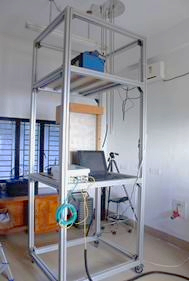
Research Facilities @ IIST Ponmudi Climate Observatory
IIST has established a Climate Observatory at its Ponmudi Campus on the hilltop of the Western Ghats (PCO, 8.76°N, 77.12°E, 1 km, AMSL). It is equipped with state-of-the-art field instrumentation for measuring aerosol and cloud microphysics along with meteorological variables. Over the years, many observational campaigns covering greenhouse gases (GHG), meteorology, boundary layer, aerosol-cloud interactions, and radiation balance studies have been carried out by the faculty of IIST. These instruments are also extensively used for lab and teaching courses at IIST.

IIST Balloon Launch Facility
Atmospheric research is one of the strongholds of IIST, with a fully owned and dedicated research facility at PCO. The observatory is one of its kind in the country, with provisions for balloon-borne measurements from near-surface to stratosphere (35 km) in the frontiers of Atmospheric Sciences, Astronomy, Astrobiology, high energy Physics, and space technology development. Students/faculty at IIST may be encouraged to build and quickly test payloads and conduct high quality research in the lower Earth's atmosphere.
A new collaborative program on the measurement of vertical profile of ozone along with meteorological parameters at multiple sites (Ponmudi, Hyderabad, Nagpur, Jodhpur) has been initiated under the coordination and support of the Earth & Climate Area (ECSA) of the National Remote Sensing Centre (NRSC/ISRO). As part of this study, coordinated monthly launches are undertaken at four sites.
Balloon launch from Ponmudi Climate Observatory
Tethered balloons for testing small payloads up to 1 km altitude
Tethered balloons of volume 9.0 m3 capable of carrying 1.0-3.0 kg payload weight up to an altitude of about 1 km are also available for conducting various scientific experiments
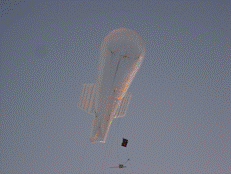
Small payload development for space research
A frequent access to space for university groups like IIST to make small autonomous payloads that will perform high-quality scientific investigations has become available with the maturing of the ISRO launch capabilities. This, in turn, requires training of graduate students, young scientists and engineers in “hands-on” research techniques used in space experiments. Student satellite (Studentsat) program (SSP), which is a balloon-based interdisciplinary program, provides an educational experience to students, young scientists, and engineers in the design and data analysis of a space experiment (up to 35 km). Studentsat can have a compendium of lightweight payloads (sensors) for remote sensing, atmospheric sciences, biology, chemistry, and astronomy designed by students within the mass and power constraints. It offers opportunities to have hands-on experience on complex processes of design, development, testing, and integration of state-of-the-art sensors to probe the space environment and data analysis. It p
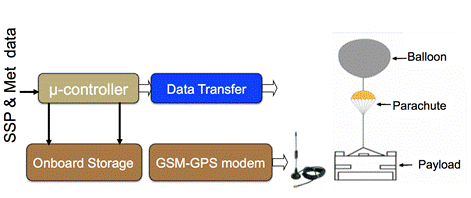
Student satellite (Studentsat) program In atomic and molecular physics both experimental and theoretical research is being done. The areas include X-ray emission spectroscopy of highly charged ions, molecular photo absorption spectroscopy, mass spectrometry of molecular ions, bio molecules, cluster ions and giant resonances.
Faculty
Major themes shared by Black American and Native American authors will be analyzed. Comparisons based on special areas like genre, gender, nation, culture, etc will be analyzed.
Faculty
- Electrochemical and fluorescence sensors
- Rapid identification and quantification of toxic metals
- detection of explosives/hazardous chemicals
- Detection of disease biomarkers
- Surface enhanced Raman scattering (SERS) based sensors
Area focuses on the economic impacts of climate changes on economic development and livelihood of the people. The studies also focus on the relationships between climate variability and economic vulnerability.
The group has faculty members working in various specialized areas of modern analog and digital control system. Major areas of research currently control group is dealing with are:
- Control based Cryptography for secure communication
- Model reduction for uncertain systems: Continuous and Discrete Systems
- Stochastic Control and Optimization.
- Power system control
It is an interdisciplinary field that is engaged in the cultural analysis of any text that includes films, photographs or, any other meaningful artifacts of culture. It has evolved through the convergence of various other disciplines like anthropology, literary studies, sociology, literary studies, etc.
Economics of developing world, poverty and inequality, Resource economics, growth and development, planning, budgeting etc.
Faculty
A peep into the lives of elderly gives way to a gory picture rather than a rosy one. Half the elderly population in the country faces abuse and face problems of various kinds. Studies have been done to analyse the problem in depth and suggest changes.
Faculty
- Electrochemical energy storage and conversion
- Electrode materials for batteries
- Carbon-metal and carbon-polymer composites for lithium-sulfur batteries
- Supercapacitors- materials for electrodes & electrolytes
English being the language of globalization is strongly linked to modernization and development. Research in English language teaching puts emphasis on the key skills like, listening, speaking reading and writing through intensive language training programmes. It will look into the theories of language learning and teaching.
It will look at the sociological manifestations of gender in literature cinema and social culture. The researcher has to look at this area from an objective perspective to analyze how identity is constructed and sometimes mutilated in various social texts. It will look at the concepts of gender identity and gendered representation.
Geology and Planetary Geosciences
Geology and planetary geosciences encompass the study of Earth's materials, structures, and dynamic processes, along with the geological evolution of other planetary bodies such as the Moon, Mars, and asteroids. This interdisciplinary domain bridges classical Earth science with space science, enabling researchers to decode planetary histories, surface processes, and potential habitability beyond Earth.
Broader Vision of the Laboratory
The laboratory is designed as a multidisciplinary hub fostering advanced research in Earth and planetary sciences. It aims to simulate extraterrestrial environments through terrestrial analogues, decode ancient Earth processes, and develop scientific frameworks that support future planetary exploration. The core emphasis lies in simulating planetary surface conditions using terrestrial analogues, exploring ancient biosignatures, and developing data-driven approaches for planetary exploration. The laboratory actively supports mission-relevant science by generating foundational knowledge for in-situ resource utilization, advancing experimental analog studies, and fostering collaborations that enable comparative analysis of planetary processes within and beyond the solar system.
Key Research Themes
1. Terrestrial Analogue Research
Investigating Earth-based analogue sites to simulate Martian and Lunar surface environments, enabling experimental studies of geological, atmospheric, and biological processes under extreme conditions.
2. Mineralogical and Geotechnical Studies
Characterizing mineralogical and mechanical properties of analogue materials to support the development of surface mobility systems and construction strategies for planetary missions.
3. Ultramafic-Hosted Mineralization
Understanding mineralization in ultramafic terrains with implications for early planetary differentiation and resource assessment on planetary bodies.
4. CO₂ Sequestration and Paleomagnetic Studies
Exploring magnesite deposits for their carbon capture potential and analyzing lodestone samples for reconstructing ancient geomagnetic fields.
5. Astrobiological Studies
Identifying biosignatures in evaporite minerals, hydrous sulphates, and other extremophile-hosting substrates to inform life detection strategies on Mars and icy worlds.
6. Paleoclimatic Reconstruction
Using Banded Iron Formations (BIFs), cherts, and stromatolites as geological archives to interpret Earth’s early atmospheric and climatic conditions.
7. Lunar and Martian Geology
Studying volcanic, sedimentary, and impact processes on the Moon and Mars, with emphasis on mineralogy, surface weathering, and regolith properties.
International Collaboration: IIST and Niigata University
In alignment with its global vision, IIST has established a strong academic and research partnership with Niigata University, Japan, under the S-Earth initiative. This collaboration enables joint research on planetary analogues, isotope geochemistry, and biosignature studies, particularly focusing on ancient stromatolitic formations and hypersaline environments in India and Japan. The exchange of faculty, students, and scientific knowledge under this partnership enhances cross-cultural scientific training and contributes significantly to the field of planetary geoscience and astrobiology.
Laboratory Facilities
Rocks, Minerals & Fossils Collection
Geological Models
Tabletop Rock Cutting Machine
Trinocular Polarizing Microscopes
Trinocular Stereo-Zoom Microscope
Heating and Freezing Stage
ASTM Sieves
Geological Field Equipment
Multi-Parameter Water Quality Meter
Direct Shear Testing Apparatus
Casagrande Liquid Limit Apparatus
Studying Planetary Geosciences at IIST
Studying this course at the Indian Institute of Space Science and Technology (IIST) offers a unique advantage due to its direct integration with India’s space research ecosystem. Students gain exposure to space mission planning, planetary data analysis, and analogue field research aligned with ISRO’s objectives. The program fosters hands-on learning through advanced lab facilities, interdisciplinary coursework, and participation in national and international collaborations. Graduates are well-prepared for careers in space agencies, research institutions, environmental geoscience, planetary exploration, and astrobiology.
- Advanced ceramic powder processing
- Porous Ceramics and Ceramic foams
- Processing of carbon foams
Faculty
Post independent India, economic models, trade with other countries, Indian agriculture sector, center state relations, budget, monetary system, services sector, neo-liberal reforms, global crisis, and Kerala economy.
Faculty
We invoke various tools from physics and mathematics to arrive at a mathematical model of a real life system. We make use of the softcomputing algorithms like artificial neural networks, genetic algorithms, fuzzy logic technique for the simulation of various real life systems.
Area focuses on the studies related to the impact of trade distorting measures such as Technical Barriers to Trade (TBTs), sanitary and phytosanitary measures (SPS), quotas, exports restrictions, distribution restrictions etc to international trade.



